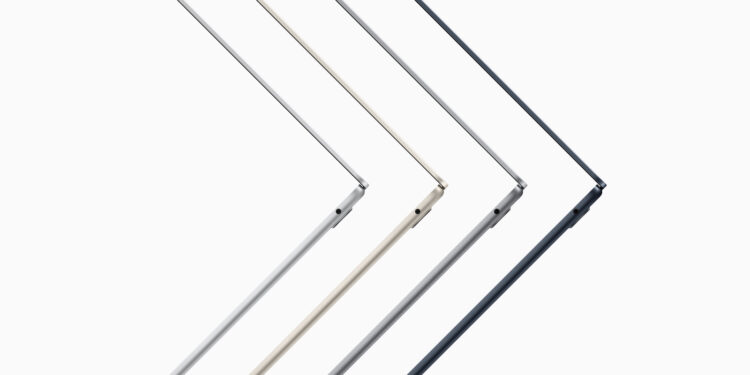The MacBook Air has been a popular choice for many years for users looking for a lightweight, powerful and versatile laptop. Now many are waiting for a major update: a MacBook Air with an OLED display. OLED screens offer impressive image quality, sharper contrasts and more vibrant colors. Nevertheless, Apple seems to be taking its time with this innovation. Originally expected for 2027, the OLED MacBook Air could now only be released in 2028.
OLED displays have long been established as a high-quality standard in the technology industry. They are now indispensable in the smartphone and TV sectors because they offer excellent image quality. But despite demand, Apple has postponed the launch of an OLED MacBook Air. The delay is well-considered and based on a number of practical considerations, as The Elec reportedThe reasons range from production costs to market demand and the quality standards that Apple expects from its products.
Reasons for the delay of the OLED MacBook Air
High costs for OLED displays
OLED displays are known for their excellent image quality but also for their high production costs. This technology is more expensive than conventional LED displays, which would inevitably affect the price of a MacBook Air with OLED. Apple is keen to position the MacBook Air as a relatively affordable model compared to the MacBook Pro. A higher price could deter many potential buyers. Apple therefore hopes that the market will develop in such a way that the prices of OLED displays will fall over the next few years - either through technical advances or through more competition among manufacturers.
Limited demand for OLED in the iPad Pro
Another factor that influenced Apple's decision is the experience with OLED displays in the iPad Pro. Apple had expected the OLED iPad Pro to generate a lot of interest and initially planned to sell 10 million units in 2024. However, this figure has been revised downwards several times - most recently to around 6 to 7 million units. The reason for this is that demand for the OLED iPad Pro dropped sharply after a good start. For Apple, this is a signal that OLED does not automatically boost sales. This could be one of the reasons why the company is being cautious with the MacBook Air and opting for a later launch.
shortage of OLED suppliers
Currently, there are only a few manufacturers that can produce OLED displays in the quality and quantity that Apple needs. Samsung is the only supplier for the MacBook Pro 2026, while Samsung and LG jointly supply the OLED panels for the iPad Pro. However, to keep prices low and meet demand, Apple needs more manufacturers to produce OLED displays in sufficient quantity and quality. Greater competition could reduce costs for Apple and accelerate the introduction of OLED in the MacBook Air. So far, however, it does not look like enough companies are willing to enter the OLED market for laptops.
Apple's quality standards
Apple places a lot of importance on the quality of its products, and that is true of the MacBook Air. A supply chain employee mentioned that Apple would be willing to accept a slightly lower display quality in an OLED MacBook Air, as long as it is close enough to the "professional level" of the MacBook Pro. This means that Apple is trying to find a middle ground where the OLED display in the MacBook Air is high quality but not as expensive as the MacBook Pro. The goal is an OLED screen that meets the high demands of users while remaining priced within reason. Finding this balance takes time and is another reason for the delay.
What does this mean for you as an Apple user?
The delay of the OLED MacBook Air is certainly a disappointment if you were hoping to buy a MacBook Air with a better display soon. While OLED technology offers significant advantages in terms of color fidelity and contrast, the high quality comes at a price. Apple wants to ensure that the MacBook Air remains an attractive and affordable option and is willing to accept a longer wait to do so. It is likely that the MacBook Air will continue to rely on LED displays for years to come - at least until Apple finds a way to introduce OLED in high quality and at an acceptable price.
A strategic move: Apple's reasons for the OLED delay
The decision to delay the OLED MacBook Air until 2028 at the earliest shows how complex the planning is for a market leader like Apple. The factors contributing to the delay range from production costs to demand developments to the question of the availability of high-quality OLED displays. Despite the desire of many users for an OLED upgrade in the MacBook Air, Apple is taking a strategic approach to create the best conditions for a high-quality and affordable end product. As an Apple user, this means that you have to be patient for the time being - but with the certainty that Apple will continue to work to offer the best quality at the best price. (Image: Apple)
- Apple plans 90 Hz displays: Innovations for iPad Air, iMac & more
- Apple plans MacBook Pro redesign 2026 with OLED display





